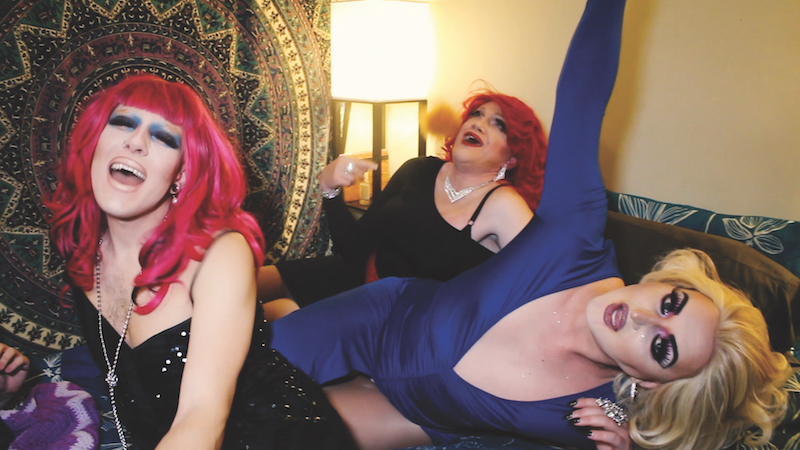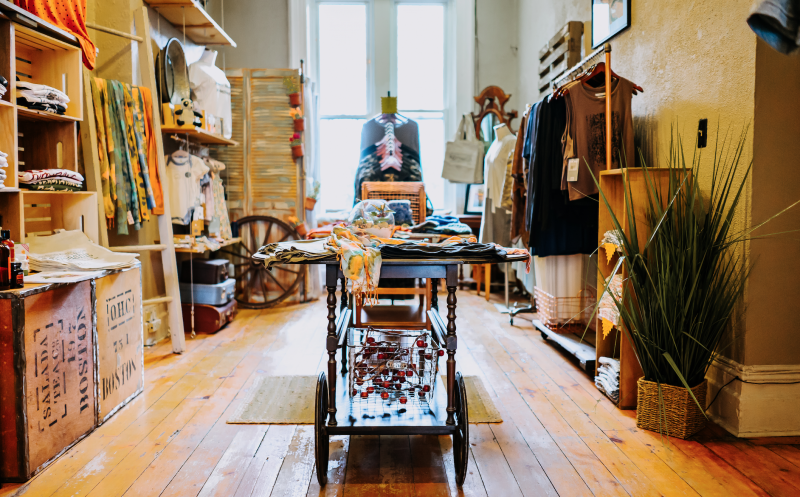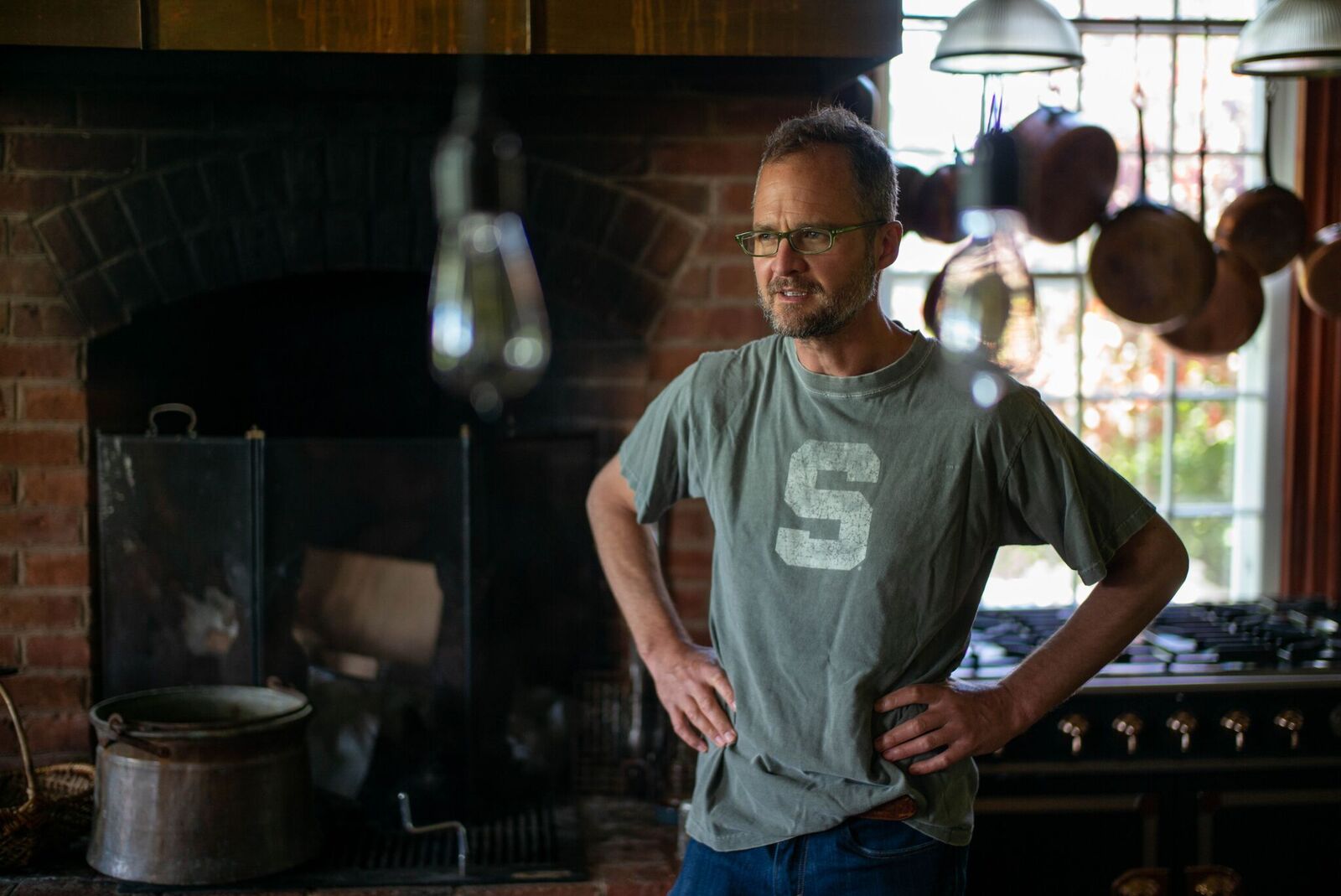This article first appeared in The Alt on June 7, 2017.
A blur of fluorescent pink hair and mesh black tutu crouches and whirls along a border of outstretched dollar bills, reflecting onto the mirrored walls of Rocks bar and nightclub in Albany. Joan Osborne’s version of the blues hit, “Shake Your Hips,” is permeating the room and it sends Raggedy Kandi into a fit as the harmonica wails. She kicks up the floor length tutu and shakes out her wild, pink curls, arms outstretched as she begins to spin again. She looks intoxicatingly free.
Its nearly 1 a.m. but the night feels vibrant and young. Welcome to Isis Vermouth’s EGO Party. For over 15 years, the local drag legend has hosted the avant garde showcase of talents and on this particular evening, she was hosting the grand finale of a drag extravaganza.
Earlier that evening, a red carpet rolled out in front of the Madison Theatre. The marquee featured the title “Empire State Queens,” a premiere presentation of the Capital Region’s very first documentary detailing Albany’s drag culture and the queens that continue to shape the scene. Isis Vermouth, Raggedy Kandi and several other performers are the stars of the show, profiled in what filmmaker Adam van Buren refers to as “mini-portraits,” with short biographical interviews detailing their start in the community, creative process and performance style. The local artist has been out in the Albany scene for the past 12 years and has unconditional love for the performers like Sybil Syrvice, Pacifica Rim, Amanda Love, Empress Champagne, Carmie Hope, and Frieda Munchon who are now forever documented in all of their glitz and glamour.
“The Albany scene is great because everyone is in their own little niche,” Pacifica Rim said. For the past seven years, the self-proclaimed “glorified Disney princess” has regularly traveled from her conservative hometown outside of Great Sacandaga Lake to perform in the more progressive capital city, where some 30-plus queens can be seen strutting their stuff. “We all have our strong points and that’s what makes us so unique. But in the larger drag community, the Capital Region gets forgotten because people—when they think of New York—think New York City, and Syracuse and Rochester. But that’s why I appreciate what Adam is doing to put us on the map.”
“I was working as a walking art piece—like a creature—so I understand dressing up and creating a character, being able to go into that,” van Buren explains. “I feel like people in Albany have seen me do that so they were open to me, and trusting me, to do this because they’ve seen me do something similar. They trust that I understood who they were and what their artistry is. I’m an artist also—in a different way—but I feel like we have an understanding.”
The documentary sheds light on the artists behind the drag queens in an effort to show the world the work, time and creative energy it takes to go into their stage presence. The film also documents the difficulties queens face because of their art: struggling with self-love and confidence, finding genuine love and relationships, dealing with family and disregard by their peers as well as creative scuffles with fellow queens. Overall, the film portrays the beauty in their art in spite of the hardships.
“I like that with drag, some people just need a stage. They don’t need a whole thing, just a forum where they can perform and Albany has that,” van Buren says. “And there are so many queens that they can rotate. There needs to be [so] many shows, because otherwise you would have all of these people crowding these spaces. The more shows that there are, the more performers there are. People do see the shows a lot, but they don’t see the individual people. They just say, ‘Oh that’s just a drag show.’ There’s actually a unique individual there, let’s give them the attention they deserve.”
The screening was a sold out. Attendees shuffled into the theater to fill in any standing room as van Buren and the queens elicited laughs, snaps and applause.

The story of drag in Albany is a long one, enjoying its prime in the early ‘80s and ‘90s when LGBTQ-friendly spaces were scattered all around and usually packed with people.
“Historically—before marriage equality, before people felt comfortable doing the little things like being out at a restaurant together—gay bars were the only place people felt comfortable going out,” Scott Levine, general manager of Waterworks Pub, said. Levine has been organizing drag and Pride events in the area for about 12 years. Today, he says, Waterworks and Rocks are the only venues with sufficient performance space to put on a show.
“Albany… it’s not a drag city,” van Buren says. “It’s very small with a lot of little pockets that you need to explore. But the way the bars are set up, there’s a real possibility for artists to come in and create a night. There’s more of an opening.”
Almost every drag show is thrown as a benefit for local community or LGBTQ groups and charities. “If you want to run a successful benefit show in this area, you contact the drag queens,” Levine says. “Out of the kindness of their own hearts, they spend on outfits, decorations, and time from their own pockets. Albany drag queens are the most generous.”
They put in hours of planning to give Albany the best productions they have to offer. As one queen in van Buren’s documentary shrugged, “It’s not Vegas but it’s as good as it’s gonna get.”
“Albany drag isn’t a local hobby,” Levine continues. “They’re professionals, and they’re talent is requested all over the northeast. [Local venues] give them total creative control, it’s their show. When you get more people involved and respect them enough to be creatively free, the better the show is and the more the community wants to get involved.”
Both Waterworks and Rocks host several shows per week, such as Wacky Wednesday at Waterworks and Isis’ monthly EGO Party at Rocks on the first Saturday. Carmie Hope hosts karaoke there each Friday and Frieda Munchon leads the trivia night on Tuesdays.
“Frieda and Carmie are longtime staples of drag in the Albany community,” Levine said. The two drag matriarchs are some of the only Albany performers who sing their own songs and maintain a constant presence. Fellow matriarch queen Amanda Love has played the mother of the bride at a local wedding and the dynamic duo has performed dinner shows at local restaurants, gigged a wedding or two and perform a kid’s show every year for Pride at the New York State Museum.
“[The kid’s show is] for people to see something that’s different,” Frieda explains. “It’s not weird, it’s not evil, it’s just different. I love the kids to come up to us, like, ‘You’re so pretty!’” She laughs, suddenly making her voice deep and gritty, “Hey, thanks kid.”
Frieda was born 15 years ago, when David Bagnardi was 44 years old. “I started when most people are stopping. Somebody just asked me to be their drag mother and I said, ‘I’ll be your drag grandmother,’” she laughs. She isn’t one of the most “experienced” queens in Albany however, the award-winning Pattie Lee is in her 80s and still performs at an EGO Party or two.
This month Frieda will celebrate her 60th birthday with a karaoke party featuring the 300-plus songs of her drag career so far. “I write a lot of parodies. Instead of ‘Stand By Your Man,’ I sing, ‘Stand On Your Heels.’ I re-wrote the whole song and I’ve played it like 5,000 times but every show there’s still someone who will ask for it. Carmie and I are gonna make a list of all the songs we usually do and we’re gonna tell people, ‘steal our songs tonight.’”
Artists like Frieda, Carmie, Amanda Love and Empress Champagne have been performing long enough to remember when Albany’s LGBTQ scene was thriving and drag queens like the legendary Hazel shined in the spotlight. There was Iodine, Tish the Dish, Mark Papa, Sheila Star—lost artists that raised these drag matriarchs to be at their best.
In the documentary, Amanda Love and Empress Champagne lament the fact that new queens will never know the trailblazers like Hazel who seemed to have been forgotten by all but few. For a moment, van Buren has captured a vulnerability in strong and bright queens like Champagne, voicing a fear that their own art and years of work might fade as well. Right in front of their eyes, things are changing.
In their early days, a drag performance was traditionally standard–lip syncing and some light dancing to a song in a flowing gown and glamorous display of hair and makeup. There was a “right way” to be–know your song by heart, always wear heels, keep your hair and makeup clean and classic and never show up to a performance with facial hair showing. Queens who didn’t comply were judged as “drag-light” or a “drag princess.”
Today the more limiting rules have fallen to the wayside as more of a general guideline, making room for artists to show their skills in costume design, body paint, elaborate skits and avant-garde performances.
“Drag has grown so much that it can be more things now, and that’s what I like about it,” Frieda says. “Back in the day, you had to be lip synching. I sing live. Carmie Hope started that, she’s the one who had the show that brought all the younger people in.”
“I learn a lot of stuff from the newer ones coming up, different ways of doing things. Back in my day, if you were doing drag and you had a beard, you were not. But now they just put sparkles all in there and you know, I think it’s kind of cool.”
Albany is home to a wide array of talent. There are still Broadway-worthy theatrical displays from artists like Pacifica Rim and plenty of other characters to boot. The “frozen queen” Jacqueline Frost will always show out painted all in white and icy blue contour. Isis has been known to sport her beard like a statement piece. Katarina Mirage has dedicated her act to the style and song of Ariana Grande and Avi Munster has a showstopping set that includes a witchy candle levitating act as boho queen Stevie Nicks. It’s one of the first mentions from many queens when asked about Albany’s best performances. Sybil Syrvice (pictured below) always shows out dazzling color—borrowing from Albany legend Empress Champagne in the practice of customizing elaborate costumes and accessories—performing with her signature runway strut, lining up sweeping, graceful dance moves and finishing with a photo-ready last look at the crowd.

“It’s really gotten more encompassing,” Frieda says. “With all the costumes now, I love it. Back then, it was just dresses. It’s more individual now that it was before. I hear some people saying, ‘Oh, that’s not right,’ or, ‘The old way wasn’t right,’ but it’s all right. That’s what bothers me. Let it go. Things evolve and that’s a good thing.”
“It’s a wonderful cycle of family,” Levine said. “The ones that have been around the longest are quick to take the new ones under their wing.”
In the drag world, this kind of relationship take the form of a mother and daughter. Up and coming performers learn the basics of drag and the ropes of the local scene. In most recent years, the role of a drag mother has devolved to more of a figurehead. With the introduction of YouTube and social media forums, many new queens are simply emerging on their own.
“Now you can just do tutorials—head online and learn how to do your dress and how to do your makeup and just head out there with no help, which was unheard of back in the day. Unheard of. I mean, people did it, but the people who did would get really crucified because they didn’t look the way they should, they didn’t dress the way they should,” Frieda explains.
“The role of the drag mother changed where they’re kind of just holding your hand as you’re walking out the door because you’re nervous. Its support, constructive criticism. A new performer might just gravitate towards a queen whose style they like, or are going for,” van Buren said.
Most up-and coming queens have been inspired to come out on the scene by the popular reality TV competition show, Ru Paul’s Drag Race. Since 2009 queens on the show have performed for a judge’s panel for a coveted title and cash prize in cutthroat competition, but the effect it has had on the outside world’s perspective of drag culture has made local queens wary.
“The show really drew attention to the art form,” Pacifica Rim says. “But the one thing about Ru Paul’s is that it has painted this picture—in the last few seasons—that drag is all about being catty. It’s not like that. The community is so welcoming and helpful, they’re not out looking to sabotage each other. The younger queens that are coming up now because of that show, tend to act that way because they think they’re expected to. I don’t want them to feel like that’s what it’s all about. It’s not as it seems. Ru Paul actually said something once that really resonated with me, ‘We as gay people get to choose our family and the people we’re around. I am your family. We are a family here.’”
At the end of the day, that is what Albany’s queens prioritize. The fellow artists who are quick to lend a dress, wig, pair of heels and helping hand.
“We’ve known each other a lot of years. We’ve gone through thick, thin, fights—fist fights with each other in front of the bar—we’ve cut each other’s throats but through it all there’s one thing that remains true. We are all family. When push comes to shove, we will have each others back,” Empress Champagne said.
When the documentary ended on Saturday night, the featured queens took to the stage to answer some questions—expertly skirting the more obnoxious attendees. A twenty-something young man approached the stage with his phone outstretched. He leaned back towards them and began taking a video of himself, the queens waving politely in the background, while he asked a question: “Girls…besides ‘the tuck’, what is the hardest part of drag?” After taking a moment to roll their eyes, they collectively agreed applying eyelashes proved the most troublesome. Then, in a gratifying moment, Isis Vermouth stepped forward in all of her “fuck-off” glory. With a nonchalant flip of the hair, she looked over the crowd as if the young man wasn’t there at all.
“The hardest part is answering stupid questions.”
The crowd went wild and the young man retreated.
As the Q&A wrapped, one frequenter of Rocks spoke up about his love for the artistic and unifying impact the EGO Parties have had on the community and before he finished, expressed his gratitude for the artists that maintain Albany’s drag scene over the years.
“I want to thank Empress Champagne for bringing up Hazel. I assure you there are still many of us who remember her and there are plenty of us who are going to love and remember every one of you.”
Photos by Adam van Buren






Trackbacks/Pingbacks